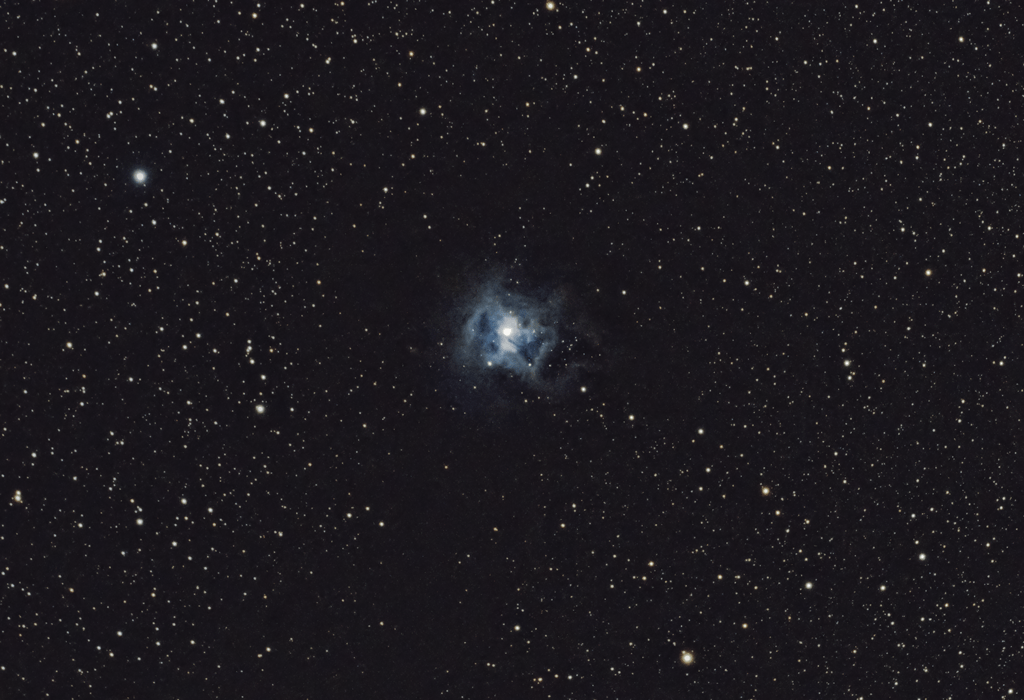This is my astrophotograph of the Iris Nebula (NGC 7023), which lies about 1300 light-years away in the constellation Cepheus. It kind of resembles the blue flower; hence, it sometimes being called the Iris Nebula. It is a bright reflection nebula—the light of the central, massive, hot, young star is being reflected back off the surrounding cloud of interstellar dust, showing the characteristic blue colour of a reflection nebula. The bright blue region of the nebula is about six light-years across. You can also see some of the surrounding dark clouds of cold dust and gas because they obstruct the light of background stars.
This was my first astrophotography session using my new Revelation Field Flattener. A field flattener is a type of lens used to lower the distortion near the edges of an image captured on a large sensor. The distortion, which is particularly evident for off-axis stars (since they are point sources) is often called coma because the distorted stars appear to have a tail like a comet. Most of my astrophotography is now done with a 4/3″ format sensor, which is on the large side, but not full-frame. With this largish sensor, the comatic aberration without the field flattener is not enormous, but it is definitely evident to a critical eye. See, for instance, my recent photograph of Markarian’s Chain below, which has has only been slightly cropped. Notice that the corner stars have small tails radially outwards from the centre.
The spacing between the field flattener and the sensor is critical—fortunately the spacing of this field flattener is adjustable which makes achieving exactly the correct spacing much easier than screwing in extension tubes of various lengths. This photo of the Iris Nebula is my second adjustment and I think it is now quite close. I’m now not sure whether the spacing needs increasing or decreasing, so I’ll leave it as it is for now!

Starting from the camera end of the main telescope, there is a 50-mm extension tube (M68), an M68 to 2″ adapter, the Revelation adjustable field flattener (set to approximately 70.5 mm of spacing), a 30-mm extension tube (M42) which includes about 2 mm of extra spacing due to the extra thread at either end (see photo above), and then the camera body (with an M42 thread), which includes 12.5 mm of back focus to the sensor. This gives a total of 70.5 + 30 + 2 + 12.5 = 115 mm. This is the stated approximate spacing requirement for a f/7 telescope like mine, so no surprise that it works pretty well!
Frames
- 134× 120-s light frames (Gain 900)
- 60× dark frames
- 60× flat frames
- 60× dark flat frames
Equipment
- Explore Scientific ED 102 mm Apo f/7 refractor
- Sky-Watcher EQ5 PRO SynScan GOTO equatorial mount
- Altair Hypercam 294C PRO colour fan-cooled camera
- Revelation Adjustable Field Flattener
- Altair 60mm guide scope
- Altair GPCAM2 AR0130 mono guide camera
Software
- Sharpcap
- PHD2
- DeepSkyStacker
- Photoshop



